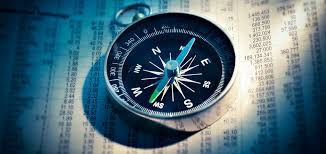Direct and indirect costs or why it is impossible to count net profit by line of business
 In companies with several divisions and branches, it is difficult to calculate the profit of each. You can subtract all expenses from all income and get some value. But this approach is not entirely correct. Rather, it would be to understand the direct and indirect costs, calculate the gross profit and only in this way determine the efficiency of the business.
In companies with several divisions and branches, it is difficult to calculate the profit of each. You can subtract all expenses from all income and get some value. But this approach is not entirely correct. Rather, it would be to understand the direct and indirect costs, calculate the gross profit and only in this way determine the efficiency of the business.
Why exactly and what all these parameters mean – we will consider in this article.
What are direct costs
Direct expenses are those that relate to a specific branch or point of sale – for example, the salary of field specialists, rent of the premises where the store is located.
For example, there is a chain of coffee shops. Its direct costs will be those that can be easily attributed to each particular coffee shop: the salary of the barista, the rent of the premises, all sorts of syrups. Everything is very simple here.
There are less obvious points. For example, logistics costs. A coffee shop orders grain under a contract with a supplier 2 times a week, and 1 courier in a car is enough for its transportation. It doesn’t matter how much grain the company orders – 2 times a week a car from the supplier will come to it. This will be reflected in the company’s accounting as a direct expense.
But if the management of the coffee shop wants to print a large print run in Tula, and it will have to be delivered to Moscow, the transportation costs will be indirect.
Stop, but we still don’t know what indirect ones are. Let’s figure it out. Just a quick summary of what direct costs are.
Direct costs are those that, without question, can be attributed to one of the directions without any compromises and assumptions.
What are indirect costs
Indirect costs are the opposite of direct ones, they cannot be attributed to just one of the lines of business. We talked a little higher about printing – this will be an indirect expense, because booklets are printed not for any particular coffee shop, but for everyone at once.
Also, the indirect costs of the coffee shop include the salary of a marketer, advertising (if the entire brand is advertised at once), rent of the central office. Indeed, in the central office we work on all points at once, therefore, they cannot be divided in any way. This means that the expense is indirect.
The easiest way to remember from the opposite is:
If the expense cannot be attributed to any specific direction, point of sale or branch, then it is indirect.
Why it is impossible to calculate the net profit by direction
Back to our original problem: how do you know how much each coffee shop makes? What if one of us earns a lot, and the rest work at a loss?
At first glance, it is logical to calculate the net profit for each coffee outlet. To do this, it is necessary to subtract the costs from the point’s revenue. It seems simple, but there is a catch.
Revenue – everything is clear. How much coffee was sold at each specific point, so is the revenue.
Direct costs are also clear. How much you spent on salaries, grain, rent, so much will go to the direct costs of this point.
Indirect costs – nothing is clear. How to calculate the costs of a marketer for each specific outlet if he launches advertising for the whole coffee brand, and does not target coffee shops separately?
We have seen a billion times that entrepreneurs in such situations “smear” indirect costs across the board. Roughly speaking, we have three coffee shops, and we pay a marketer 60,000 rubles. It turns out that for each point there is a cost of 20,000 rubles for a marketer. This is how it looks in an example simplified to the extreme ↓
Coffee house 1
Coffee house 2
Coffee house 3
Revenue
100,000
90,000
140,000
Direct costs of salaries, rent, etc.
80,000
75,000
80,000
Indirect costs (salary of a marketer)
20,000
20,000
20,000
Total:
0
-5,000
40,000
It turns out that one of the coffee houses breaks down, and the other is unprofitable. Now imagine that the network launches one more point, the fourth. Now the marketer’s salary is divided into four points.
Coffee house 1
Coffee house 2
Coffee house 3
Coffee house 4
Revenue
100,000
90,000
140,000
100,000
Direct costs of salaries, rent, etc.
80,000
75,000
80,000
80,000
Indirect costs (salary of a marketer)
15,000
15,000
15,000
15,000
Total:
5,000
0
45,000
5,000
After the opening of a new point, the “zero” coffee shop became profitable, while the unprofitable one went to zero. What miracles! This is the absurdity of the approach – the opening of a new outlet seems to affect the profitability of those already working. After all, we want to evaluate the effectiveness of each of the points separately, but it turns out that their result is related to the work of other points. More precisely, not even by the work of other points, but simply by their presence.
Correctly – to evaluate directions by gross profit. It allows you to assess objectively how much each line of business earns in isolation from all the others.
What is gross margin and what is it for
Gross margin is referral revenue minus direct referral costs. And that’s all. The approach is as simple as the grandfather’s ax – we just look only at what concerns the specific direction that we want to calculate.




